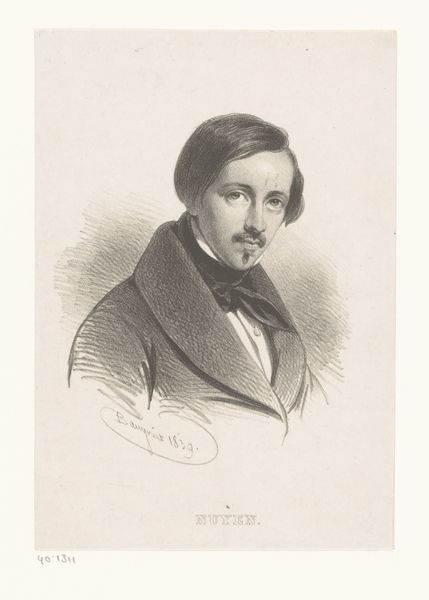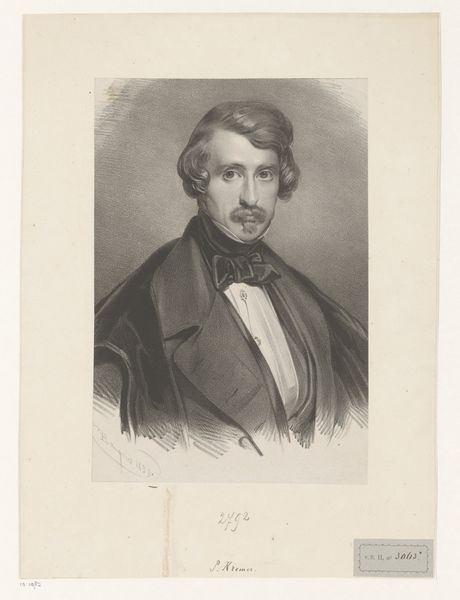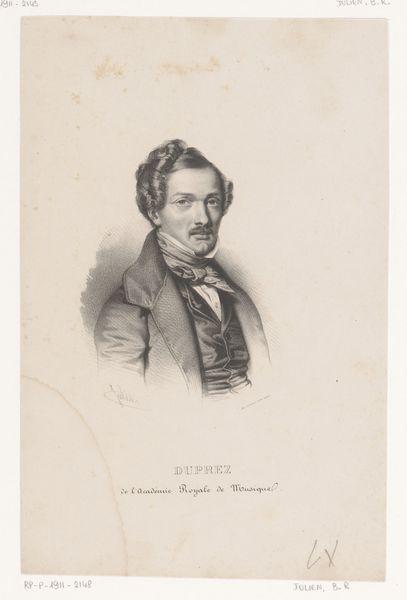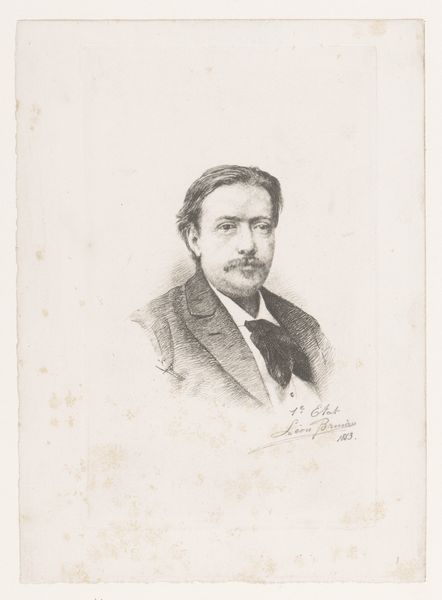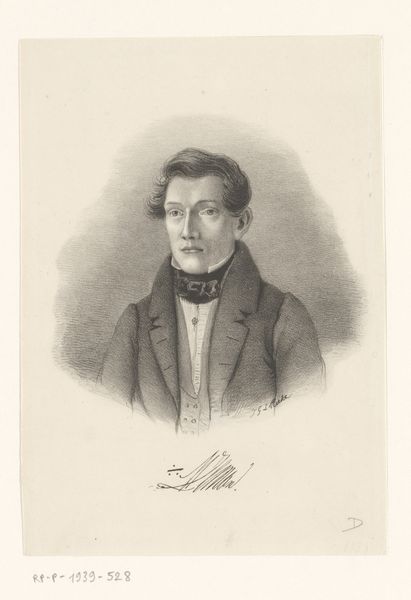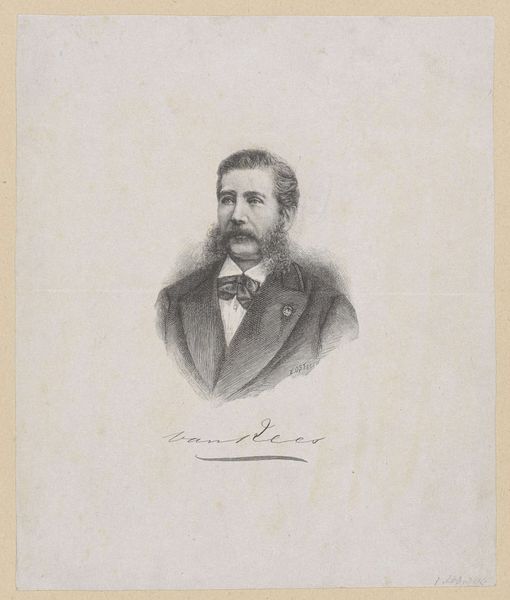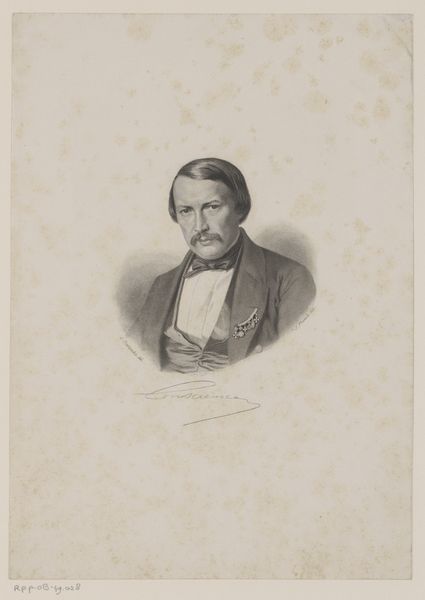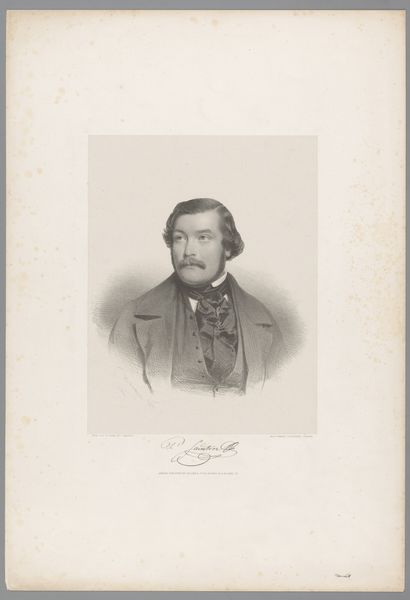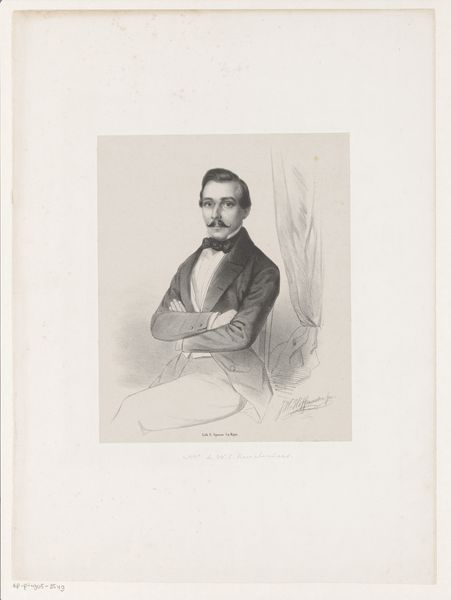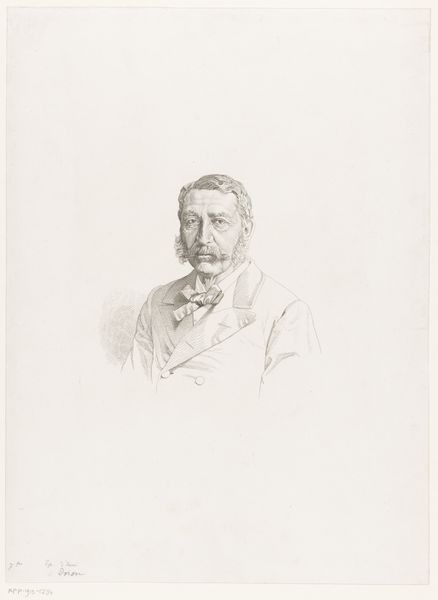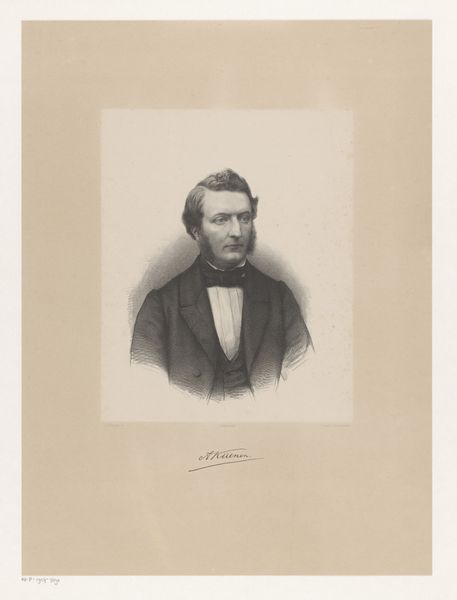
drawing, pencil
#
portrait
#
pencil drawn
#
drawing
#
facial expression drawing
#
light pencil work
#
pencil sketch
#
portrait reference
#
pencil drawing
#
romanticism
#
pencil
#
animal drawing portrait
#
portrait drawing
#
pencil work
#
academic-art
Dimensions: height 480 mm, width 362 mm
Copyright: Rijks Museum: Open Domain
Curator: This pencil drawing, "Portret van Wijnand Nuijen," was created around 1839 by Huib van Hove Bz and now resides here at the Rijksmuseum. What are your first impressions? Editor: My attention is drawn immediately to the somewhat melancholic air. The artist seems caught in a moment of pensive introspection, underscored by the subtle interplay of light and shadow that contours his face. Curator: Nuijen's positioning is no accident. The Romantic period emphasized the individual's relationship with nature, and it’s clearly a deliberate decision to place him within this vague, somewhat wild landscape. There is a suggestion here of the artist communing with the world around him, notebook open for when inspiration strikes. Editor: That open notebook hints at the Romantics' reverence for creativity. The inclusion of a palette or paintbrush often symbolized artistic identity in portraits from that era. His neatly-folded cravat and dark jacket lend a slightly melancholic and theatrical aspect to his personality. Is there an echo of Byronic heroes? Curator: Absolutely. Nuijen died young, not long after this portrait was made, which no doubt contributes to this feeling today. This, I think, fits into a larger cultural obsession of the era around youthful potential being cut short, almost validating his potential in artistic circles. It adds another layer to how we perceive his life and work retrospectively. Editor: I note also the soft gradations of the pencil, rendering Nuijen almost ethereal against the landscape. It feels intentionally symbolic: the fragility of life represented through the delicacy of the medium itself. Curator: I hadn't considered it in those terms. You're making me see how deeply entwined the symbolism of the portrait is with its creation. In its cultural milieu, I imagine its viewers would be drawn to that balance, reflecting on mortality and creative endeavor. Editor: It is in that dance between visibility and vanishing, reality and idealization, that the enduring power of symbols rests. Curator: It's so helpful to consider how symbols and historical context can reshape our contemporary view. Thank you for pointing out so much meaning embedded within a simple pencil drawing. Editor: My pleasure. Analyzing artistic visions and seeing them connect across eras enriches both the art and our lives.
Comments
No comments
Be the first to comment and join the conversation on the ultimate creative platform.
